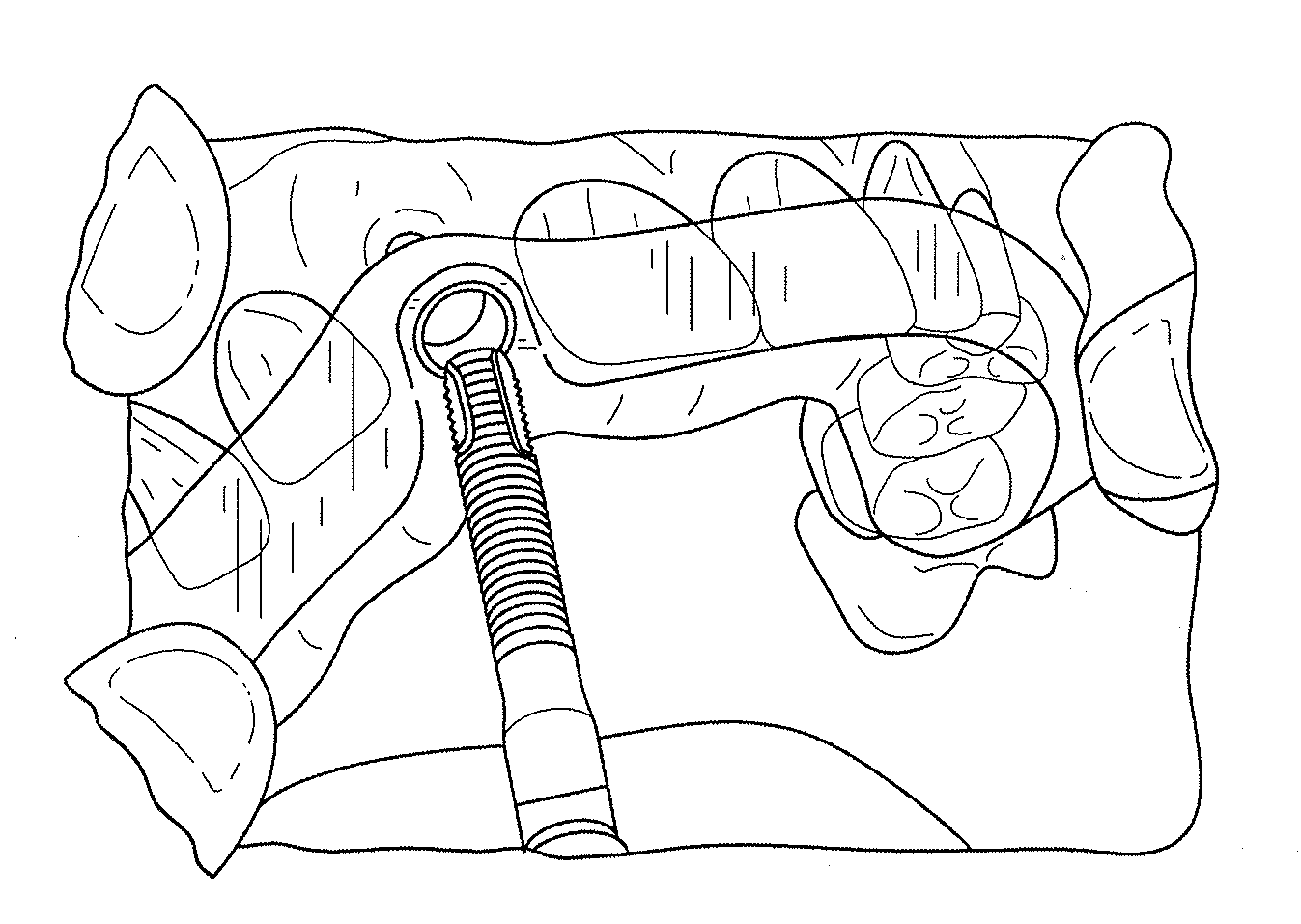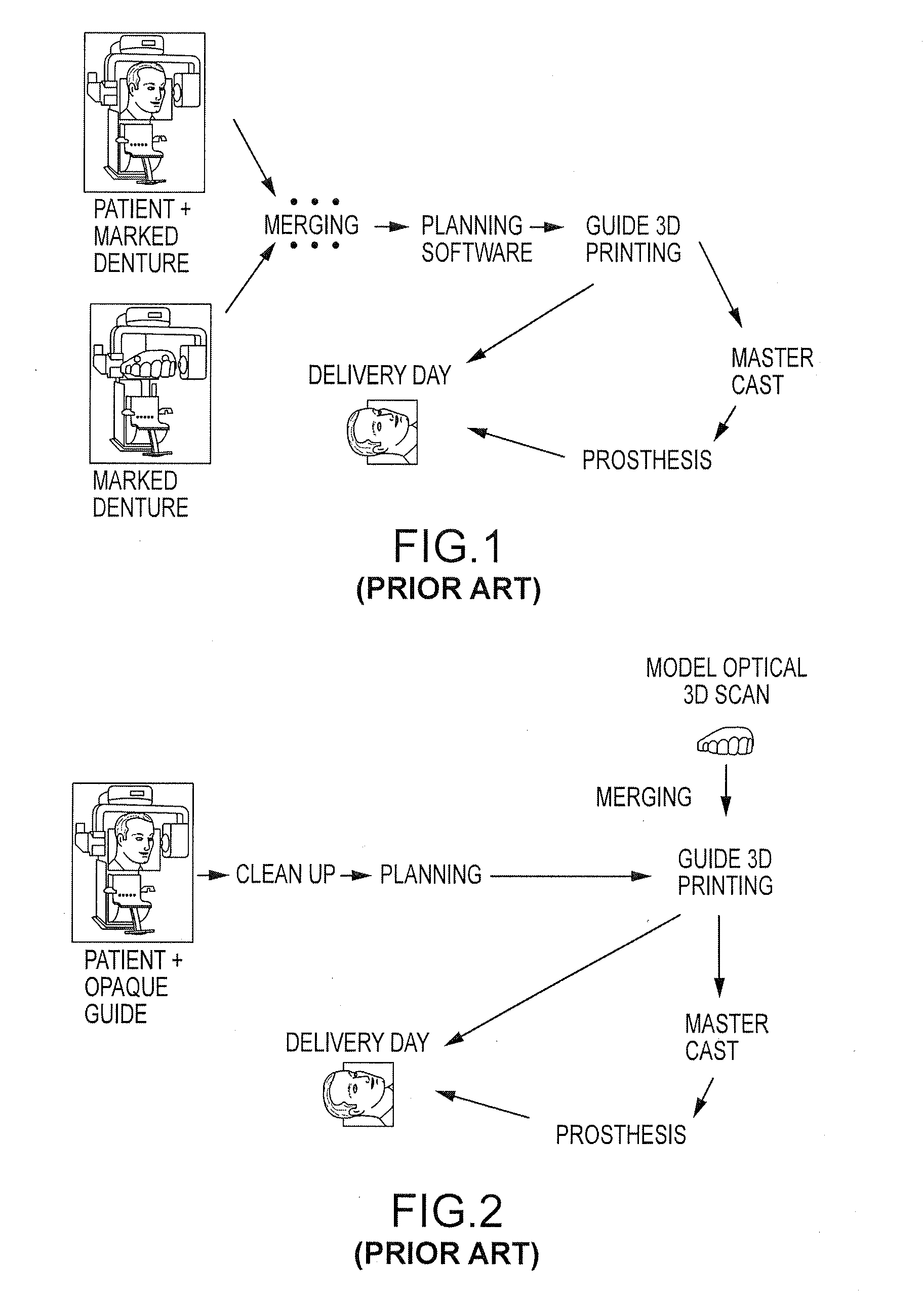Assisted dental implant treatment
a dental implant and treatment technology, applied in the field of dental implants assisted treatment, can solve the problems of reducing slipping of dentures while chewing foods, and affecting the quality of dental implants, so as to reduce the cost, reduce the attractiveness of dental implants, and reduce the cost
- Summary
- Abstract
- Description
- Claims
- Application Information
AI Technical Summary
Benefits of technology
Problems solved by technology
Method used
Image
Examples
Embodiment Construction
[0078]Conceptually, there are several phases involved in the design and delivery of dental prostheses. Generally speaking, the over all process can be broken into several interdependent phases that include, without limitation, evaluation of the patient, treatment planning, manufacture of the prosthesis, surgical procedures to prepare the patient's oral structures to receive the prosthesis, and finally, delivery of the prosthesis.
[0079]In certain prior art systems, such as the systems in FIG. 1 and FIG. 2, part of the initial evaluation of the patient involves CT scanning to determine the location and quality of the underlying bony components of the patient's jaw around the intended surgical site. For example, in the NobelGuide™ system, CT imagery of the patient's oral structures, and a marked denture, are merged using computer software to produce a “virtual” representation of the patient's surface oral features, in relation to the underlying hard tissue such as bone and existing tee...
PUM
 Login to View More
Login to View More Abstract
Description
Claims
Application Information
 Login to View More
Login to View More - R&D
- Intellectual Property
- Life Sciences
- Materials
- Tech Scout
- Unparalleled Data Quality
- Higher Quality Content
- 60% Fewer Hallucinations
Browse by: Latest US Patents, China's latest patents, Technical Efficacy Thesaurus, Application Domain, Technology Topic, Popular Technical Reports.
© 2025 PatSnap. All rights reserved.Legal|Privacy policy|Modern Slavery Act Transparency Statement|Sitemap|About US| Contact US: help@patsnap.com



